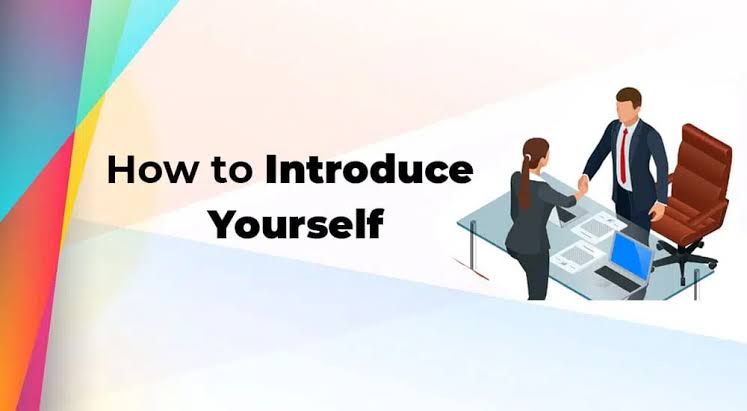Introducing Yourself in a Presentation as a Student: A Comprehensive Guide

Introducing Yourself in a Presentation as a Student: A Comprehensive Guide
Presenting yourself effectively in a presentation as a student is crucial for setting the right tone and establishing credibility with your audience. Whether you’re introducing yourself at the beginning of a class presentation or during a conference, following these step-by-step guidelines can help you deliver a confident and engaging introduction:
Step 1: For Introducing Yourself in a Presentation as a Student Is Know Your Audience
Before you begin your introduction, take a moment to consider who your audience is. Are they classmates, professors, or industry professionals? Tailoring your introduction to suit the expectations and interests of your audience can make it more impactful.
Also read – How to Introduce Yourself in Class: A Step-by-Step Guide
Step 2:Introducing Yourself in a Presentation as a Student

Outline what key information you want to convey about yourself. This could include your name, academic background, relevant experiences, and your role in the presentation. Organize your thoughts to ensure a clear and concise delivery.
Step 3: Introducing Yourself in a Presentation as a Student Is Start with a Strong Opener
Capture your audience’s attention right from the start with a compelling opening statement or question. This could be a thought-provoking statistic, a relevant anecdote, or a bold statement that sets the tone for your presentation.
Join WhatsApp Group For Lates Information
Step 4: Introduce Yourself Clearly
Begin by stating your name clearly and confidently. Include your academic program, year of study, and any relevant affiliations or positions you hold within your academic institution or organization.

Step 5: Highlight Your Expertise
Share relevant information about your academic background, areas of expertise, and any relevant experiences or projects you’ve worked on. Highlighting your qualifications and expertise establishes credibility and helps your audience understand why they should listen to you.
Step 6: Connect with Your Audience
Find common ground with your audience by briefly mentioning shared experiences or interests. This helps establish rapport and makes your introduction more relatable and engaging.
Step 7: Share Your Objectives
Clearly state the purpose and objectives of your presentation. Let your audience know what they can expect to learn or gain from your presentation and why it’s relevant to them.
Step 8: Maintain Eye Contact and Confidence
Maintain eye contact with your audience throughout your introduction to convey confidence and engagement. Stand tall, speak clearly, and project your voice to ensure that your message is heard and understood.

Step 9: For Introducing Yourself in a Presentation Is Be Concise and Relevant
Keep your introduction concise and focused on the most relevant information. Avoid going into unnecessary detail or straying off-topic, as this can detract from the clarity and effectiveness of your introduction. Introducing Yourself in a Presentation
Step 10: For Introducing Yourself in a Presentation Is Practice, Practice, Practice
Practice your introduction multiple times to ensure a smooth and confident delivery. Rehearse in front of a mirror, record yourself, or practice with a friend or mentor to receive feedback and make improvements. Introducing Yourself in a Presentation
By following these step-by-step guidelines, you can deliver a memorable and impactful introduction that sets the stage for a successful presentation as a student. Remember to be authentic, confident, and engaging, and you’ll leave a lasting impression on your audience.












Post Comment